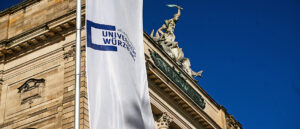
Estrella Resources has commenced an extensive survey program across its concessions in Timor-Leste, specifically targeting promising manganese and limestone deposits located in the Lautém Municipality. Covering an area of 3,200 hectares, this initiative aims to refine geological models and improve drill targeting for the Ira Miri manganese and Werumata limestone prospects. The company is positioning itself to leverage the abundant mineral wealth of the region.
The initiative marks a significant step for Estrella, which is recognized as a first-mover in Timor-Leste’s emerging mining sector. To enhance the exploration process, the company is employing advanced geophysical techniques. These methods are expected to unlock the potential of both commodities, which are strategically situated near coastal infrastructure, facilitating future development.
Survey Details and Methodology
The survey will commence with a drone-based LiDAR assessment at Werumata, covering 1,700 hectares over a 15-day period. This includes three days dedicated to establishing control points and an additional twelve days for conducting flights at 100 meters apart and 80 meters in altitude. TimorRai Exploration Services Lda and Enmintech will execute the LiDAR survey, which is designed to map subtle surface features, including ridges and outcrops.
This initial phase is crucial for accurately delineating the high-purity limestone sheet and ensuring compliance with the Joint Ore Reserves Committee (JORC) standards for any potential resource estimation, which Estrella anticipates could be defined by the end of 2023. The survey follows a recent agreement with PT Raka Energi Mandiri, extending key milestone timelines to March 2024 for mining permits and to June 2024 for export infrastructure. This extension indicates a measure of confidence in the project’s advancement despite ambitious deadlines.
After completing the work at Werumata, the survey team will shift focus to Ira Miri for a 1,500-hectare LiDAR survey. This survey aims to identify topographical lows and historical structures, which are expected to enhance predictive modeling for supergene manganese deposits. Previous assays at Ira Miri have indicated high-grade potential, with manganese levels reaching up to 58.6 percent.
Following the LiDAR assessments, Estrella intends to conduct a drone-based magnetics survey to map geological contacts and structures. The final phase will include a MobileMTd survey by Expert Geophysics, utilizing drone-mounted equipment to measure electromagnetic resistivity and assess the depth and extent of conductive manganese zones. By integrating these datasets with existing induced polarisation (IP) surveys, surface prospecting, and drilling results, Estrella is adopting a comprehensive approach to identify high-priority drill targets.
Local Engagement and Future Prospects
Estrella’s operations are already underway at Ira Miri, where a maiden drilling campaign has intersected 6.45 meters of massive manganese oxides at shallow depths. This marks a significant milestone as Timor-Leste’s first modern exploration of metallic minerals. Furthermore, the company is preparing for resource-definition drilling at Werumata, bolstered by a recent $5 million investment from MJ Ratta Investments aimed at enhancing exploration efforts.
The limestone overlaying Estrella’s manganese targets presents dual-resource efficiency, with its high-purity calcite suitable for various applications, including cement, glass, agriculture, and environmental remediation in Indonesia’s nickel industry. The United Nations COMTRADE database reports that Indonesia’s nickel industry achieved an export value of US$6.82 billion in 2023, with projections indicating significant growth through 2030. Various industry analysts and government forecasts suggest that Indonesia’s nickel-related exports could reach US$50 billion annually by 2045.
Estrella’s exploration initiatives in Timor-Leste emphasize local engagement, including a partnership with the state-owned Murak Rai Timor, which holds a 30 percent joint venture stake. The company employs local workers and collaborates with students from the National University of Timor-Leste in geophysical trials, highlighting its commitment to responsible social development.
With a first-mover advantage in a largely unexplored region, robust infrastructure, and a binding offtake agreement with PT Raka Energi Mandiri for up to 500 million tonnes of limestone over five years, Estrella is well-positioned for significant growth. The company’s large-scale survey program is a pivotal step toward unlocking Timor-Leste’s mineral potential, with advanced geophysical tools aimed at refining its manganese and limestone prospects. The outcomes of these surveys could be transformative, setting Estrella on a path to becoming a key player in Southeast Asia’s burgeoning minerals market.







